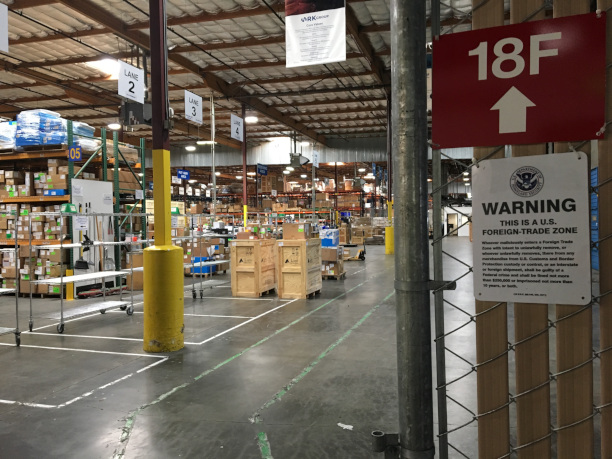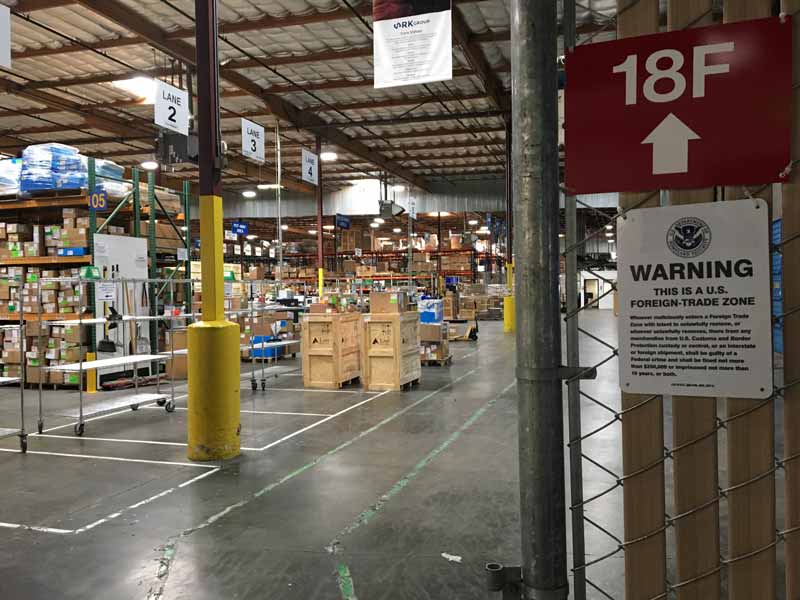Editor’s Note: RK’s Rock Magnan was recently interviewed by Transport Topics for a story on the rise in nearshoring and reshoring. The story appeared in the magazine’s Nov. 14 issue.
https://www.ttnews.com/articles/supply-chain-woes-accelerate-reshoring-near-shoring-trend
Supply Chain Woes Accelerate Reshoring, Nearshoring Trend
The impact of the COVID-19 pandemic followed by supply chain disruptions around the world has sparked a resurgence of companies bringing sourcing and manufacturing back to the United States or closer to U.S. shores.
While the pandemic continues to be a catalyst, interest in reshoring and nearshoring has been growing over the past several years. Companies are coping with rising costs to source and produce goods in China and other Asian locales. They also have faced tense geopolitical environments, unreliable and expensive global shipping services and supply chain delays exacerbated by port congestion and even inland transportation issues. These factors have encouraged manufacturers to move closer to the source of consumption — the U.S.
Rosemary Coates, executive director of the Reshoring Institute, said the pandemic and the chaos it created awakened companies to the fact that they were dealing with risk.
“Chinese companies are there by the hundreds,” she said of plants popping up on the U.S.-Mexico border, and even Mexico’s interior. For U.S. businesses, Mexico-based sourcing and production also has a tariff advantage. “Goods coming directly from China are subject to a 25% penalty tariff. So, if you manufacture in Mexico instead of China you get a 25% savings on cost,” she noted. “Those goods also benefit from advantageous duty treatment under the [United States-Mexico-Canada Agreement].”
Coates gave two examples of businesses that chose to expand in the U.S. instead of going overseas, or brought back production: One was a major coffee retailer that decided to procure ceramic coffee cups that it once sourced oversees from a factory in Ohio. Another was a U.K.-based maker of water purification systems for use in airports and malls, with manufacturing in China. With the U.S. a major growth market, they chose to build a factory in Dallas near the airport, specifically to serve the U.S. market, instead of expanding production capacity in China.
The trend is borne out in the 2021 State of North America Manufacturing Report produced annually by research and publishing firm Thomasnet.com. The report found that 83% of manufacturers are “likely” or “extremely likely” to reshore by adding North American suppliers, up from 54% in March 2020. The research also cited a potentially dramatic impact from increased reshoring, noting that if four out of five U.S. manufacturers brought on one new domestic single-contract supplier, it would inject $443 billion into the U.S. economy.
“Not filling orders or losing a supplier with no backup, seeing other [sourcing] constraints that were not there before,” she said, describing some of the challenges. “All of a sudden, [supply chains] became a much bigger decision, with a lot more variables and new risks introduced.”
China is no longer the lowest cost sourcing option for U.S. manufacturers, Coates said. One alternative she has seen is companies adopting a “China plus one or two” strategy. In this approach, companies are moving some production and sourcing from China to other Asian countries, such as Vietnam, Malaysia or Thailand, at up to a third of the costs. A variation on that theme involves companies relocating manufacturing from Asia and sourcing it along the U.S.-Mexico border.
A similar trend toward supply chain rebalancing also was cited in the 27th Annual Third-Party Logistics Study, a collaboration between the Council of Supply Chain Management Professionals, Penn State University’s Smeal School of Business, NTT DATA and Penske. The report, released last month at the annual CSCMP conference, found that 80% of shippers surveyed have taken or are planning to take action toward “rebalancing production locations to move toward more regional or domestic product networks.”
Rebalancing Supply Chains
John Janson, senior director of global logistics for custom apparel maker SanMar, said the pandemic “exposed so many potholes in our industry.” SanMar operates in 25 countries, including several in Asia. The company made a decision several years ago to diversify its supply chain in a bid to minimize disruption, cut costs and improve speed to market. Among the regions it looked at were Latin America, eventually settling on Honduras.
“There is not enough labor to support the amount of product we need” in the U.S., Janson said, noting that SanMar has a plant in Tennessee that produces the company’s “made in USA” brands. Yet its biggest production facility is in Honduras.
As a near-shoring example, SanMar sends raw material such as yarn from the U.S. to Honduras, where it is turned into apparel, and re-imported into the U.S. In addition to the labor advantages, Janson says the nearshoring strategy has delivered significant time-in-transit reductions, lower transportation costs and reduced apparel tariffs through the Central America Free Trade Agreement. He also benefits from ample shipping capacity through Puerto Cortés in Honduras.
“It’s our largest outbound shipping location,” Janson said. “It’s three to four days’ transit to Florida, where I can cross-dock into my distribution centers either by truck or intermodal rail. Or from Houston, where I can get product quickly up into the Midwest.”
The Honduras operation has a bio-energy plant and the largest rooftop solar array of any SanMar site. However, Janson said companies should practice caution when applying any nearshoring strategy.
“You have to go into it with your eyes wide open. This is still a developing country and there are infrastructure and other challenges you have to deal with,” he said, noting such as issues as designing and constructing buildings to withstand hurricanes.
Managing the Current Landscape
Mark Manduca, chief investment officer for global third-party logistics firm GXO Logistics, said COVID made supply chains longer, slower and more complicated. Working capital is tied up longer, and goods unable to get to market in a timely manner then have to be discounted, cutting margins. His customers cite the need for diversification of supply and manufacturing, improving cash flow, reducing inventory obsolescence and bringing goods closer — and faster — to the consumer’s last mile as drivers of reshoring and nearshoring.
It’s an analysis and understanding of risk, and total cost of goods sold — including the costs of long global transport cycles, capacity, delays, supplier disruption and lower margins on late-delivered goods that have to be sold at a discount, he said. Those considerations are factored into decisions on where to source production.
“Instead of producing thousands [of goods] in China and bringing it onshore, you can manufacture onshore [or near shore] and personalize it,” Manduca said, citing a growing trend among clients. “Customers want the opportunity to get really close to the consumer.”
Supply chains take a long time to rebalance, Manduca said, noting that there could be marginal shifts toward more regional sourcing and manufacturing. Industries such as luxury goods and fast fashion that are high-value and require speed to market are well suited to reshoring or nearshoring strategies that push manufacturing and distribution as close to the consumer as possible.
“The personalization process is very important. This is growing rapidly and is a formidable direct-to-consumer channel for the 21st century,” Manduca said. “Understanding the nodes of your business, the need for direct-to-consumer delivery, getting products to [customers] quickly instead of from 10,000 miles away is an important part of the journey. That’s the benefit of diversification.”
One element of a reshoring or nearshoring decision that can’t be overlooked is how it affects all the supporting infrastructure that underpins manufacturing, such as supplier bases, warehousing, local labor and distribution resources, noted Rock Magnan, president of RK Logistics Group, a Silicon Valley-based 3PL that serves clients in retail fulfillment, automotive, high-tech and semiconductor manufacturing.
“We are usually a trailing industry,” Magnan said of 3PL services. “We trail the decisions our customers make and where they want to manufacture and source goods.”
As businesses figure out how to get closer to their customers, he continued, they also have to take into account how to redesign the inbound supply chain for materials.
“Conceptually, it’s easy to move manufacturing from Asia to the U.S. or Mexico in a reshoring move,” Magnan noted. “The problem is all the vendors you have are still in Asia. So, you have to work with those vendors to reshore or nearshore them as well.”
Magnan explained that once those decisions are made, the 3PL has to react and secure the warehousing infrastructure to support the move.
With today’s tight market for warehousing space — “therein lies the challenge,” he summarized. “Do we try to be proactive, and acquire space in advance of the client’s move? Or are we more reactive? It’s all about how much risk you want to take on and how to manage or mitigate that.”
Many of the hottest markets in the U.S., such as Phoenix and Austin, Texas, face capacity constraints, he said. “As new businesses move in and set up in what are already compressed markets, that will put more pressure on 3PLs to find the right mix of space, workers and services to support a reshoring move.”
At the end of the day, a reshoring or nearshoring decision is a long-term strategy that should be based on a cohesive three- to five-year time frame, if not longer.
“You have to stick with it,” said Satish Jindel, president of consulting and data analytics firm ShipMatrix. “Don’t change direction because of one downturn or short-term crisis. Managing by crisis is not good for any business.”



